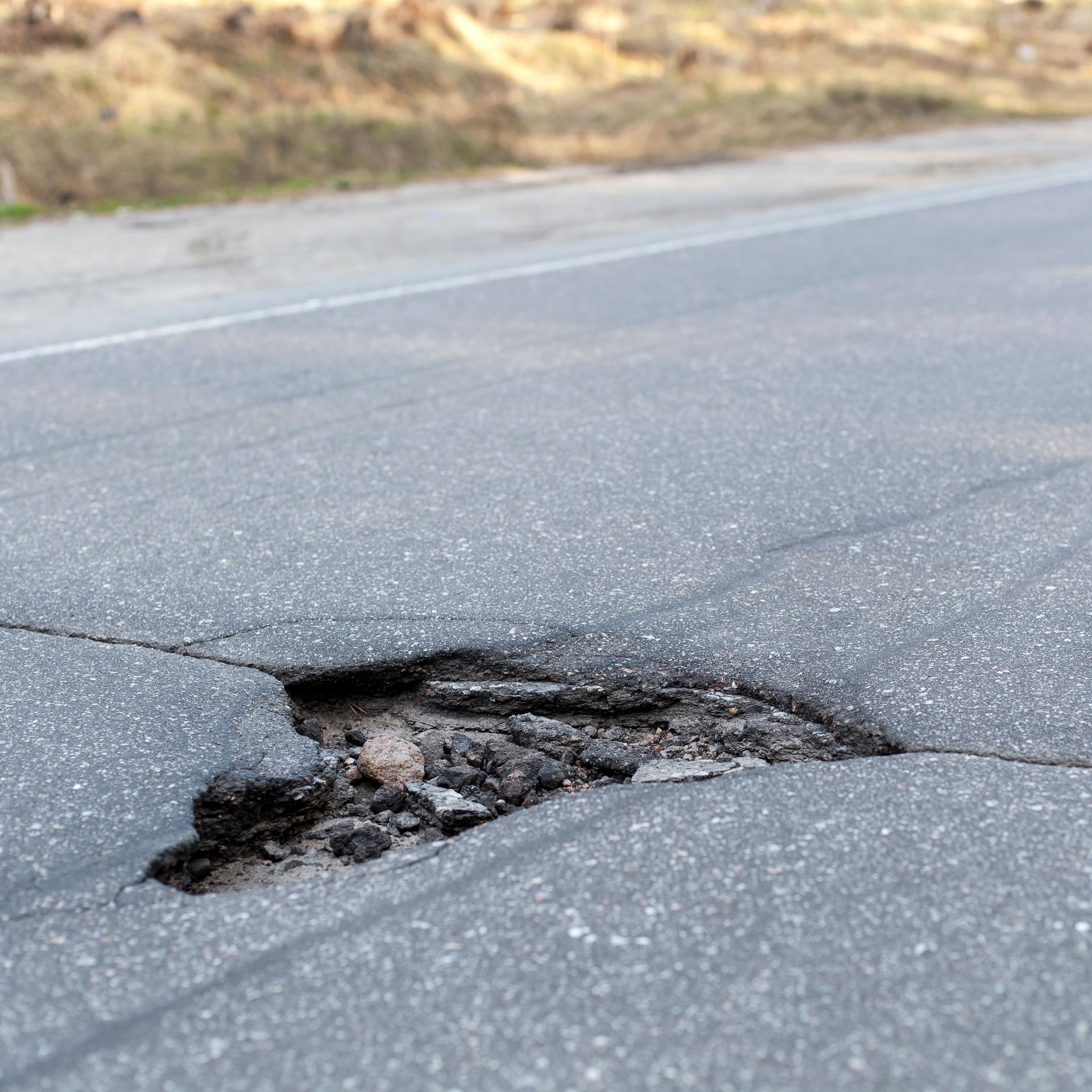October 13, 2025
Asphalt repair plays a crucial role in preserving road safety and extending the life of public and private infrastructure. With the ongoing rise in traffic demands and environmental wear, keeping road surfaces smooth and durable has become an essential priority. Well-maintained asphalt ensures better accessibility, reduces hazards, and supports the daily movement of people and goods. In this discussion, we’ll explore the major causes of asphalt deterioration, examine how paving companies handle both small- and large-scale repairs, and highlight how technology and collaboration continue to reshape the industry.
Understand Asphalt Deterioration
Asphalt deterioration results from a combination of environmental exposure, mechanical stress, and time. Constant temperature fluctuations cause expansion and contraction that create cracks and surface deformities. Water infiltration—whether from rain, snow, or poor drainage—accelerates weakening by eroding the underlying base layers. Vehicle fluids, such as oil and gasoline, also degrade asphalt’s binding properties. These factors collectively compromise road integrity, making timely attention from pavers essential.
Climate plays an especially important role in determining pavement lifespan. In colder areas, freeze-thaw cycles widen cracks, while in hotter climates, softened asphalt may deform under heavy loads. Because of this, pavers tailor their repair strategies to match local environmental conditions. Understanding these climatic challenges helps technicians design region-specific maintenance plans that deliver lasting results.
The most common types of asphalt damage include potholes, rutting, and thermal cracking. Each form requires its own repair approach to restore performance and safety. Preventative maintenance—such as sealcoating, crack sealing, and early intervention—is key to avoiding costly reconstruction later. When municipalities or property owners commit to regular inspections and upkeep, they protect their infrastructure investments while maintaining safer, smoother roads for everyone.
Assess Asphalt Conditions Effectively
The first step in asphalt repair is assessment. Paving companies conduct visual inspections to evaluate surface color, texture, and cracking patterns. These observations reveal weak spots, drainage issues, and areas that may require deeper evaluation. Regular inspections are an affordable and efficient way to detect minor damage before it grows into major repairs.
Technology has revolutionized how pavers evaluate asphalt conditions. Tools such as ground-penetrating radar, laser scanning, and infrared imaging provide detailed information about both surface and subsurface integrity. These data-driven insights allow repair teams to pinpoint issues that would otherwise go unnoticed, improving accuracy and reducing unnecessary costs. Combining these technologies with professional expertise ensures a comprehensive understanding of pavement health.
Once assessments are complete, pavers determine which areas require immediate attention and which can be scheduled for later repair. Prioritization is critical when budgets and resources are limited. Safety, traffic impact, and the extent of damage all influence decision-making. By developing thorough assessment reports, paving professionals communicate findings clearly to stakeholders, helping them allocate funding wisely and plan projects that deliver maximum long-term benefit.
Perform Small-Scale Repairs Efficiently
Small-scale repairs are essential for addressing early signs of wear and preventing larger structural failures. Pothole repair, for instance, restores the road’s surface integrity and improves safety. Paving companies typically use either cold patching for quick fixes or hot mix asphalt for more permanent results. Both methods fill damaged areas to prevent further cracking and reduce hazards to vehicles.
Crack sealing is another preventive measure widely used by pavers. This process involves filling surface cracks with a flexible bitumen-based sealant that prevents water from seeping into lower layers. By keeping moisture out, crack sealing extends pavement life and minimizes the need for larger repairs. It’s a cost-effective method that offers excellent long-term value.
Edge repair addresses damage along pavement borders, which can quickly spread if ignored. Paving professionals reshape and reinforce edges to restore structural balance and prevent erosion. Sealcoating is often added as a protective measure, creating a barrier against ultraviolet rays, water, and chemicals. Regular sealcoating helps maintain appearance, reduce oxidation, and enhance road durability. According to the Freedonia Group, the worldwide demand for primary asphalt is projected to rise steadily—from about 128 million metric tons in 2024 to around 150 million metric tons by 2029—reflecting a 3.2% annual growth rate. Choosing high-quality materials suited to each region’s conditions ensures these small-scale repairs deliver maximum performance and longevity.
Conduct Large-Scale Asphalt Rehabilitation
When damage extends beyond surface-level wear, paving companies turn to large-scale rehabilitation techniques. Asphalt milling is one of the most common methods. This process involves removing the upper layers of deteriorated pavement to create a stable base for new asphalt. Milling not only smooths uneven surfaces but also recycles old material, promoting sustainability and cost efficiency. The process ensures new pavement bonds properly and lasts longer.
Overlaying is another common large-scale solution. A new asphalt layer is applied over existing pavement, restoring surface quality and skid resistance without needing complete reconstruction. This method saves time and resources while significantly improving aesthetics and performance. Pavers often use overlays for highways, parking lots, and community streets where traffic disruption must be minimal.
Full-depth reclamation (FDR) takes rehabilitation a step further. By pulverizing the existing asphalt and mixing it with base materials, FDR strengthens the foundation and creates a stable base for repaving. It’s an environmentally friendly and efficient approach that reduces hauling needs and material waste. Similarly, sub-base stabilization—through additives like lime or cement—enhances the ground’s load-bearing capacity, ensuring the new surface remains strong under heavy use.
Leverage Technology and Innovation
Technological progress continues to transform how pavers fix and maintain asphalt. One major advancement involves the use of new asphalt mixtures, such as polymer-modified and bio-based binders. These materials increase flexibility, resist rutting, and lower environmental impact, helping roads withstand harsh weather and heavy traffic. By adopting these innovations, pavers can deliver longer-lasting surfaces that perform better under diverse conditions.
Automation is also revolutionizing asphalt work. Automated paving systems ensure consistent thickness, alignment, and temperature control during installation. The result is smoother roads, faster project completion, and reduced waste. Paving companies that use automation gain greater precision and quality assurance across every stage of construction.
Sustainability initiatives are another defining trend. Recycling old pavement materials, incorporating warm-mix asphalt, and reusing geosynthetics all help lower carbon emissions and reduce material waste. These eco-friendly practices demonstrate how pavers are aligning their work with broader environmental goals while maintaining quality and efficiency. Digital management tools also help streamline project tracking, enabling real-time data sharing and better coordination among teams. This digital transformation supports more transparent, timely, and cost-effective project execution.
Build Collaboration in Asphalt Management
Successful asphalt management depends on collaboration. Partnerships between paving companies and local authorities are essential for achieving durable, community-focused results. Local governments offer valuable data about traffic patterns, public safety, and infrastructure priorities, allowing paving professionals to design more targeted maintenance programs. These alliances help align public interests with practical construction needs.
Community participation is another powerful tool. When residents report potholes or surface damage, pavers can respond quickly and prevent small issues from escalating. Encouraging this kind of civic engagement strengthens accountability and ensures timely interventions that benefit everyone.
Feedback from various stakeholders—including engineers, transportation departments, and the public—guides the continuous improvement of maintenance strategies. Pavers use this information to refine repair schedules, adopt better materials, and enhance service quality. Financial collaboration also plays a key role. Through funding initiatives, grants, and public-private partnerships, communities can secure resources for consistent road maintenance. Transparent budgeting and efficient resource allocation keep repair programs both effective and sustainable.
Keeping asphalt roads in top condition is vital to maintaining safe, accessible, and sustainable transportation networks. By combining regular maintenance with innovative repair technologies and strong collaboration, paving companies deliver lasting results that support economic and social mobility. From small-scale repairs to full rehabilitation projects, each improvement contributes to smoother and safer roads. Reach out to us at Road Solutions Paving for all your asphalt maintenance needs!



